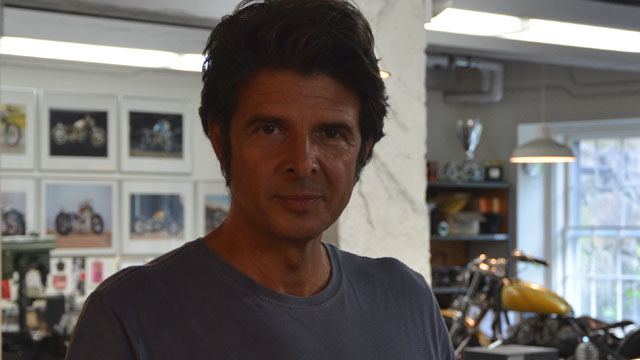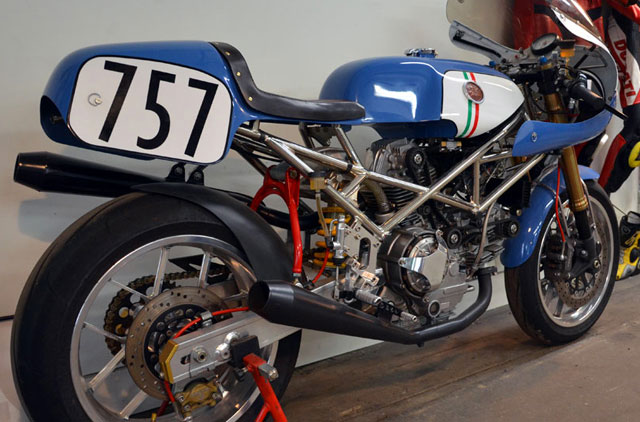
Walt Siegl
I ran across Walt Siegl Motorcycles at the 2011 International Motorcycle Show in New York City and was struck by the incredible level of craftsmanship. I was in a rush to shoot hundreds of bikes before the show opened to the public so I made a mental note and moved on.
I later learned that Walt Siegl was a native of Austria who was attracted to both design and motorcycles from an early age. He held jobs as a toolmaker and welder in Europe then worked for a steel company in Russia before immigrating to New York City in 1985. He worked on motorcycles in Long Island City for years, mainly as a hobby, before relocating to New Hampshire to focus exclusively on building custom bikes. When I was at the Laconia Motorcycle Rally this year, I paid a visit to his workshop to learn more about the man and his incredible machines.
Flower Power
Walt Siegl Motorcycles is located in the ground floor of an 1860’s textile mill situated alongside a gently rolling stream. The space itself is beautiful and serene. Granite pillars frame a compact studio populated with the tools of his trade; vintage metal working tools, oxyacetylene torch and TIG welder. A bike in progress sat on a lift patiently awaiting its’ destiny while a handful of finished creations looked on.
Most custom bikes are predictably formulaic: S&S powertrains, long raked front forks, wide rear tires and garish paint jobs. These expensive creations are impractical at best and dangerous at worst. Walt has taken a unique path to custom bike building symbolized by his marque. His bikes are adorned with neither flames nor skulls, but a flower. Although the reference is decidedly tongue-in-cheek in an industry characterized by macho stereotypes, it offers insight into his worldview. He is trying to create something beautiful.
What makes these motorcycles unique is that they simultaneously occupy the space of both modern and classic motorcycles. Walt doesn’t have a license to manufacture motorcycles so he starts with a street legal donor bike, usually a Ducati or Harley-Davidson. He’ll end up using a handful of parts from the original, but most importantly, he keeps the section of the frame and the engine case with the original VIN number. Although the bike may not resemble its’ former self when Walt is done, it can still be registered with the Department of Motor Vehicles.
A Labor Of Love
The bikes are informed by the client’s wishes and to some extent, the donor bikes they are built upon, but each shares a common thread that is Walt himself. There are no computers. There are no CNC machines. It’s an organic process where custom parts are made by hand. The frames are chrome moly—TIG welded and heat stress relieved – and meticulously constructed around the engine. He uses models to perfect the proportions of fuel tanks and even paints the mock-ups to make sure everything is just right. And eye-catching custom details abound – fenders, oil tanks, seats, badges, risers, bars, dashes, upper trees, pipes. When aftermarket parts are employed, it’s obvious they were carefully selected – think Öhlins suspensions and forged Carrozzeria wheels. The bikes are drop dead gorgeous, but what about what you can’t see?
Walt has been racing motorcycles since he was a teenager and was only sidelined last year when his Ducati 916 slid out from under him at 140 mph on the track. Although anyone can tell that Walt knows design, it’s also clear he knows speed. He spends most of the time and money not on his bikes’ outward appearance, but on the powertrain. One of the bikes in his shop was built around a Harley-Davidson Panhead and was clocked at over 180 mph on the Bonneville Salt Flats. Speed indeed.
Walt’s bikes are so labor intensive that he’s only able to build 4 to 5 per year and the waiting list stretches out a few years, but if you want to own a custom motorcycle that aspires to a higher calling, it’s worth the wait.

Comments
Meet Walt Siegl, Custom Bike Builder